 |
surfresearch.com.au
knox : surfing at hilo, 1888 |
| home | catalogue | history | references | appendix |
|
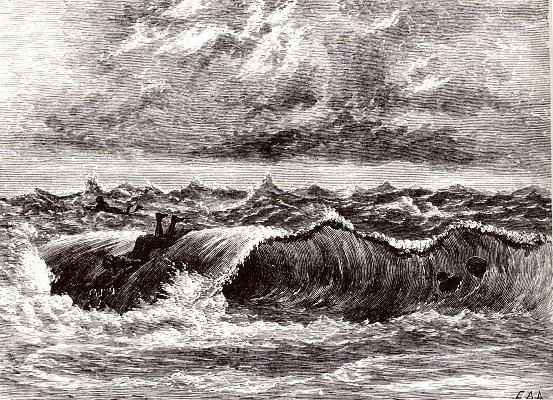
"Each man had a surf-board, which
was a thick plank twelve or fifteen feet long and perhaps thirty inches
wide (8), and said to be made from the trunk of
a bread-fruit tree (9).
There were five or six of the natives
to whom we had promised half a dollar each for the performance
(10).
They pushed out with their planks
to the first line of breakers and managed to dip under it and swim along
by the help of the under-tow.
They passed the second line in the
same way, and finally got beyond the entire stretch of surf into comparatively
smooth water.
"Then they tossed up and down for
a while, waiting their chance.
What they wanted was an unusually
high swell, and they tried to find a place in front of it so it would sweep
them towards the shore just where it broke into a comber.
They tried several times, but failed
(11),
and we began to get out of patience (12).
" At last they got what they had
waited for, while some were kneeling on their planks and others lying extended
, with their faces downward, and just ahead of the great comber they swept
on at a speed of little, if any, less than forty miles an hour (13).
They were just ahead of the breaker,
and apparently sliding downhill; one of them ,was swamped by it, but he
dived and came up behind the wave and made ready for the next. The others
kept on, and were flung high and dry by the surf, and as soon as they could
rise from their planks they ran towards us to receive their pay (14).
One of the fellows stood erect on
his plank while in the surf, just as the Nubians at the first cataract
of the Nile stand up, while descending through the foaming water."
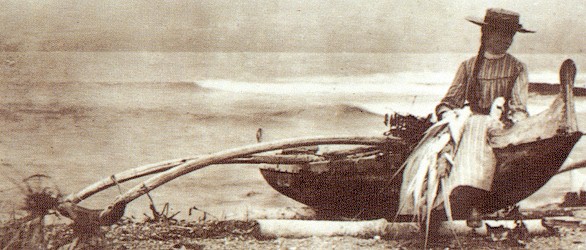
All these works are inspired by Knox's philosophy of travel which is expressed in his little guide How to Travel (New York, 1881): "To an observant and thoughtful individual, the invariable effect of travel is to teach respect for the opinions, the faith, or the ways of others, and to convince him that other civilizations than his own are worthy of consider- ation." This lack of condescension - rare for the often patronizing Victorian traveller - of course contributed to the accuracy of Knox's reporting in such a book as The Boy Travellers in Australasia. Combined with this accuracy is his insatiable curiosity about all aspects of life in the countries he visited - his work indeed foreshadowing the writing of modern anthropologists. - page xiii2. Hilo was a famed surfing location on the large island, Hawaii, and said to rival Waikiki for the quality of it's surf. Finney and Houston identify seven different breaks, page 28.The 10th book in this boys adventure series, Thomas Wallace Knox, (1835-1896) was a journalist, and "self-proclaimed wandering-America," prolific writer, most noted for his Boy Travellers series. The series was based on his world tour in 1866, which provided the historical and geographical accuracy in text and illustrations. Knox's journalistic talents emerged during the Civil War, when he became a war correspondent for the New York Herald. Knox wrote 20 books for this series which became a very popular 19th Century juvenile adventure series.
3.
Image, Top of Page. Surfing at Hilo, Page 32.
Image, Centre of Page.
Hilo, Page 31.
Images are credited in PREFACE,
page xvi.
The publishers have kindly allowed
the use of illustrations image was either prepared specifically for the
book or taken from the files of HARPER'S MAGAZINE and other of their publications,
and those illustrations have admirably supplemented those that were specially
prepared for the book.
At Hilo... "one of the very few places
on these islands where you can see a truly royal sport - the
surf-board. "
"They look, kneeling or lying on
their long surf-boards, more like some curious and swift-swimming fish
- like dolphins racing, as it seemed to me - than like men. "
The article was re-printed in 1874...A69-
Northern
Nordhoff, Charles : California, Oregon,
and the Sandwich Islands.
Harpers and brothers, New York. 1874.
4. Written before the surf in the bay was eliminated by the building of breakwaters to develope a commerical harbour, circa .
5. Notes both adult and juvenille (male) surfers and in significant numbers.
6. Confirms the commonly reported decline in surfing activity since Cook's arrival, circa1780.
7. The format of
the book implies that events described by one of the principal charcters
are the author's eyewitness observations. Despite some definite inaccuracies,
the report has several features tend to confirm this.
8. Probably an
over-estimation of the board length, and certainly not 30 inches wide.
9. Bread-fruit (Artocarpus altila) has been identified a a suitable timber for surfboard construction (Finney and Houston, page 42), although existing examples are exceedingly rare. This is probably due to the light weight of the timber.
10. Possibly first report of surfing for payment
11. Conforms with contemporary surfing practise.
12. This minor comment goes a considerable way to confirming this as a first hand report.
13. An over-estimation, but certainly emphasises the drama of the activity.
14. The rapid
return to the beach of the riders indicates that they were primarily concerned
with their payment, the context also possibly indicating relatively poor
surfing conditions at this specific time. This would be confirmed by the
accompanying image, if it was congruent.
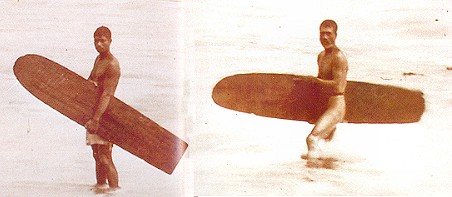 |
(Bishop Museum) |
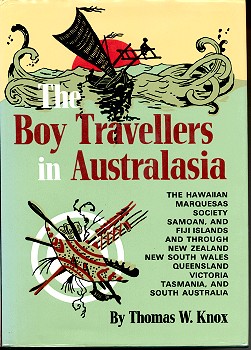
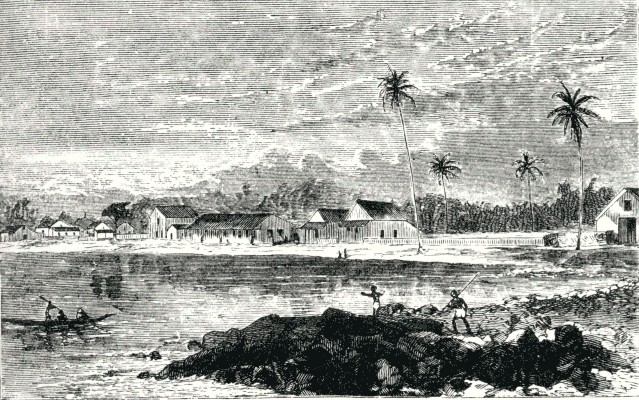

| home | catalogue | history | references | appendix |